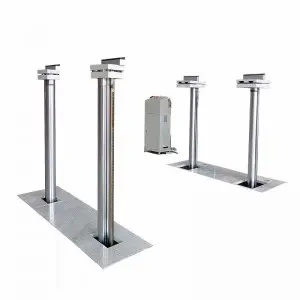
The Versatile and Efficient Cylinder: A Deep Dive into Its Uses and Applications
Cylinders are often overlooked in our everyday lives, but they are actually a crucial component in various industries and applications. From engines to hydraulic systems, cylinders play a vital role in converting energy into motion. In this article, we will explore the different types of cylinders, their uses, and how they work.

The Versatile and Efficient Cylinder: A Deep Dive into Its Uses and Applications
At its simplest form, a cylinder is a solid geometric shape with two parallel circular bases at either end. The most common type of cylinder is the right circular cylinder, where the bases are perpendicular to the axis of the cylinder. This type of cylinder is widely used in engineering and manufacturing processes due to its simple geometry and ease of fabrication.
One of the most well-known applications of cylinders is in internal combustion engines. The cylinders in an engine house pistons that move up and down to convert the chemical energy in fuel into mechanical energy. As the piston moves up and down, it compresses air and fuel mixture, ignites it, and pushes it out to generate power. Without cylinders, the combustion process in engines would not be possible.
Another common use of cylinders is in hydraulic systems. Hydraulic cylinders use pressurized hydraulic fluid to create linear motion. When hydraulic fluid is pumped into a cylinder, it pushes a piston to move in one direction. The force generated by hydraulic cylinders is used in a wide range of applications, from lifting heavy loads in construction to controlling heavy machinery in manufacturing plants.
Cylinders also play a crucial role in transportation systems. In cars, cylinders are part of the engine block and are responsible for generating power to move the vehicle. The number of cylinders in a car’s engine determines its performance and efficiency. For example, a car with a four-cylinder engine is more fuel-efficient than a car with an eight-cylinder engine.
In manufacturing processes, cylinders are used in pneumatic systems to control the movement of equipment and machinery. Pneumatic cylinders use compressed air to create linear motion, making them ideal for high-speed applications. The simplicity and reliability of pneumatic cylinders make them a popular choice in industries such as automotive, packaging, and robotics.

The Versatile and Efficient Cylinder: A Deep Dive into Its Uses and Applications
Cylinders are also found in everyday objects that we often take for granted. From gas springs that control the opening and closing of doors to shock absorbers that dampen vibrations in cars, cylinders play a significant role in enhancing our comfort and safety.
In conclusion, cylinders are versatile and efficient components that have a wide range of uses and applications. Whether it’s in engines, hydraulic systems, transportation, manufacturing, or everyday objects, cylinders are essential for converting energy into motion. Understanding the different types of cylinders and how they work can help us appreciate the ingenuity and engineering behind these simple yet powerful devices. Next time you see a cylinder, remember the important role it plays in our modern world.quicklift car lift
